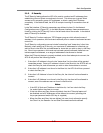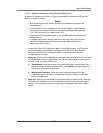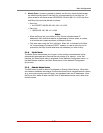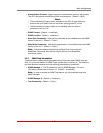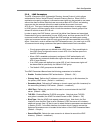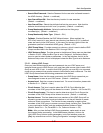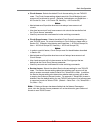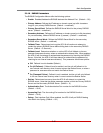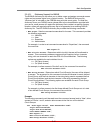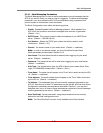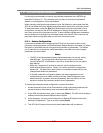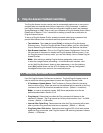
5-37
Basic Configuration
5.9.8.2 Viewing LDAP Groups
If you need to examine an existing LDAP group definition, the "View LDAP Groups"
function can be used to review the group's parameters and Circuit Access settings.
5.9.8.3. Modifying LDAP Groups
If you need to modify an existing LDAP Group in order to change parameters or circuit
access rights, the "Modify LDAP Group" function can be used to reconfigure group
parameters. To Modify an existing LDAP Group, access the AFS-16 command mode
using a password that permits access to Administrator Level commands. Once you
have accessed the Modify LDAP Group menu, use the menu options to redefine
parameters in the same manner that is used for the Add LDAP Group menu, as
discussed in Section 5.9.8.1.
Note:AfteryouhavedefinedLDAPGroupparameters,makecertaintosave
thechangesbeforeproceeding.IntheWebBrowserInterface,clickonthe
"ModifyLDAPGroup"buttontosaveparameters;intheTextInterface,pressthe
[Esc]keyseveraltimesuntilthe"SavingConfiguration"messageisdisplayed.
5.9.8.4. Deleting LDAP Groups
The Delete LDAP Group function is used to delete LDAP Groups that are no longer
needed. To delete an existing LDAP Group, you must access command mode using a
password that permits access to Administrator Level commands.
5.9.8.5. LDAP Kerberos Set Up
Kerberos is a network authentication protocol, which provides a secure means of
identity verification for users who are communicating via a non-secure network. To
display the LDAP Kerberos Set Up menu, you must access command mode using a
password that permits access to Administrator Level commands.
The LDAP Kerberos Setup menu allows you to define the following parameters:
• Port: (Default = 88.)
• Realm: (Default = Undefined.)
• KeyDistributionCenters(KDC1throughKDC5): (Default = Undefined.)
• DomainRealms1through5: (Default = Undefined.)



